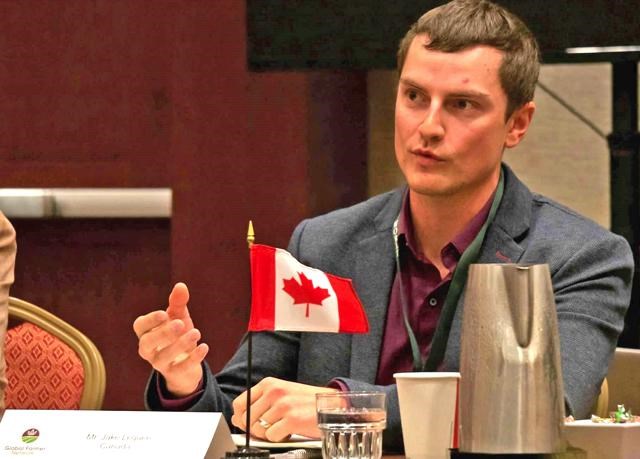By Jake Leguee
Have you ever heard of new crop missions?
Probably not. Most farmers I’ve talked to over the past couple of months have never heard of them. But they are a critical component of our sales process to our overseas buyers, and this year, I have the privilege of being the farmer on the durum trip.
Every year, a few teams of people from the Canadian wheat value chain head off to numerous export markets, such as Latin America, the United Arab Emirates, Nigeria, parts of Asia, and, for my trip, some of our major durum markets in Southern Europe and North Africa.
The trips are organized by Cereals Canada, the Canadian International Grains Institute (CIGI) and the Canadian Grain Commission (CGC). As a producer on the board for the Saskatchewan Wheat Development Commission, I have the honour of being the farmer in the group. There will be an exporter with us as well. This diverse group will be able to present key information to our buyers on the 2019 crop.
I’m sure some of you are wondering – what’s the benefit of a costly trip like this? To me, the benefits are clear. Think about your relationship with your crop input retailer; do you just see them once a year when you buy products from them? Or do they grow a relationship with you over the years, trying to show you why you should do business with them?
If they don’t, the only tool they have to earn your business is price. In a world where wheat is grown almost anywhere, most of it much closer to market than we are in Canada, price is simply not a factor we can compete on.
What sets us apart in Canada is the quality of the product we produce, the incredible advances we have made over the last couple decades in improving sustainability, and the lengths we go to ensure our customers are satisfied with our products.
When we meet with our buyers, they’re eager to hear the presentation given by the farmer; they are incredibly interested in how we grow our crops, how we manage our risks, and the generational legacy we build in our businesses. Indeed, the producer presentation is a critical aspect of these missions.
We have some important issues to try and resolve. Italy has been an unwilling buyer of Canadian durum, driven by frustrating country of origin labelling laws and a campaign against Canadian durum, created by a farm group called Coldiretti.
Unlike 2018, we don’t have a massive crop of largely #1 and #2 durum. We have a mix of all grades this year, which may create some interesting opportunities. Speaking directly to our buyers will help us understand what those are.
Something that many of us don’t often take the time to ponder is that what we do as farmers matters to consumers. They are interested in how we make our cropping decisions, how we manage difficult harvest weather (case in point 2019), how we make pesticide application decisions, and, perhaps most importantly in today’s environment, how we maximize sustainability.
The fact that we try to improve our soils with the goal to pass our farms down to our children is a foreign concept for many parts of the world, and it is something to be celebrated.
I’ll be speaking about all of these topics and more when I travel across the ocean in a little less than a month. I’ll be away for nearly two weeks, which is a long time to be away from my young children; but when I think about their future, and how we will continue to drive success in growing Canadian wheat and durum, the choice is easy.
This isn’t just about our crop in 2019 and servicing our customers for today; it’s about building the future for Canadian agriculture and ensuring our product has a market, now and in the future. I’m excited for the remarkable privilege of representing Canadian durum producers.
(Jake Leguee farms with his family in the Fillmore area)



